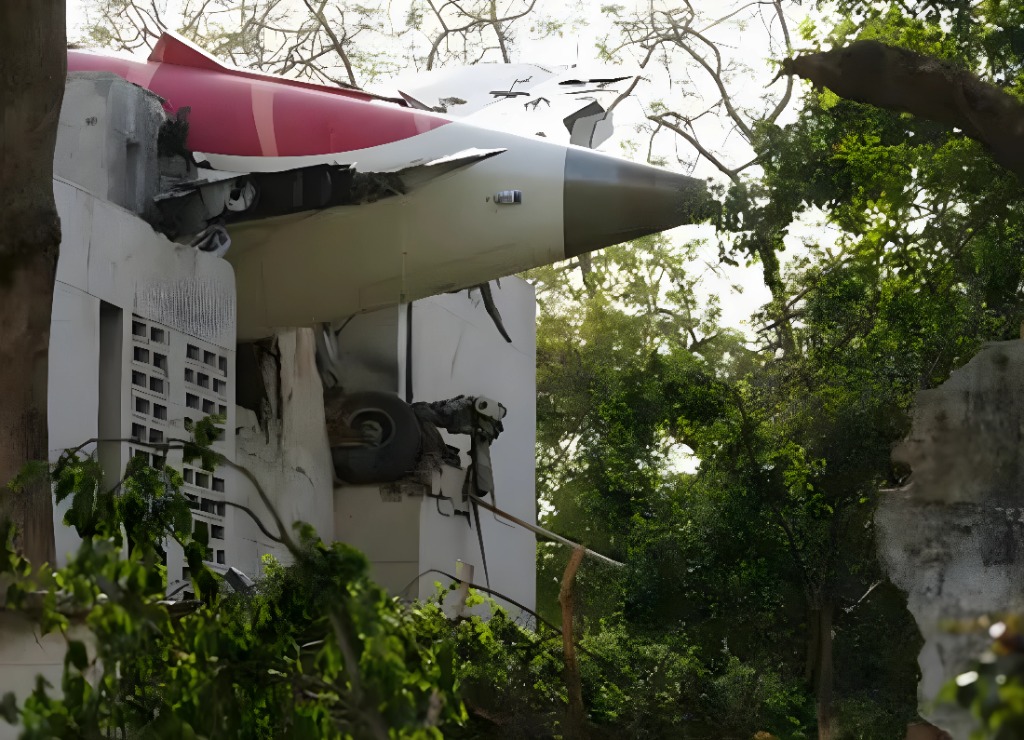A routine domestic flight became a national tragedy on the morning of June 2, 2025, when Air India Flight 271, operating a Mumbai–Ahmedabad sector, crashed during its approach to Sardar Vallabhbhai Patel International Airport (AMD).
The accident, which claimed the lives of 68 of the 94 people onboard, is being called one of the deadliest aviation incidents in India in over a decade. As investigators pore over black boxes and weather data, questions are emerging about systems, procedures, and what could have gone wrong in those final minutes.
The Flight and the Final Moments
Air India 271 was operated by an Airbus A320neo, tail registration VT-AQF, with 89 passengers and 5 crew members. The flight departed Mumbai (BOM) at 07:12 IST, scheduled to arrive in Ahmedabad at 08:10 IST.
At approximately 07:58, the aircraft initiated its descent into Ahmedabad amid unstable weather conditions, including gusty winds and intermittent rain.
According to Air Traffic Control (ATC) recordings and early data from ADS-B tracking, the aircraft executed a go-around on its first approach to Runway 23 due to wind shear alerts. On the second approach, the aircraft reportedly lost altitude rapidly and impacted terrain approximately 4.8 km southeast of the airport perimeter.
Eyewitness Accounts
Residents of Odhav, a suburban area near the crash site, described hearing “a loud engine surge followed by an explosion.”
“It felt like the plane was trying to climb again, but it dipped sharply,” said Aamir Pathan, a local shopkeeper. “Then we saw smoke and heard a second blast.”
Emergency response was swift, with fire brigades, airport rescue teams, and NDRF units arriving on-site within 15 minutes. Despite efforts, the fire consumed most of the rear fuselage, making identification and recovery challenging
Early Data & Theories
While official investigation is ongoing, preliminary indicators suggest:
- Severe microburst conditions or wind shear may have destabilized the approach
- Autopilot disengagement and manual control takeover occurred seconds before the crash
- No distress call was made, pointing to a sudden loss of control
- Flight Data Recorder (FDR) and Cockpit Voice Recorder (CVR) were recovered within 24 hours
The crash site showed landing gear deployed and flaps extended, suggesting the aircraft was configured to land.
Who’s Investigating?
The incident is being jointly investigated by:
- DGCA (Directorate General of Civil Aviation, India)
- Aircraft Accident Investigation Bureau (AAIB)
- Airbus safety team (from Toulouse)
- Pratt & Whitney, manufacturer of the aircraft’s PW1100G-JM engines
- Observers from ICAO and IATA due to international safety interest
A preliminary report is expected within 30 days, with a final report targeted for early 2026.
The Human Toll
The crash resulted in:
- 68 fatalities (including all 5 crew members)
- 26 survivors, some critically injured, rescued by first responders and nearby residents
- Victims included business travelers, students, and families returning home after holidays
The Government of India has announced:
- INR 25 lakh compensation for families of the deceased
- Aviation safety review task force to assess approach procedures at high-density airports
- Psychological counseling and medical support for survivors and families
Industry Reflections: What Needs to Change?
Experts believe the tragedy exposes critical issues:
| Issue | Risk |
|---|---|
| Monsoon-season operations | Require stricter real-time decision-making protocols |
| Pilot fatigue and training | Increased workload and under-experience in rapidly growing fleets |
| Airspace congestion | Ahmedabad’s growing traffic may require upgraded ATC systems |
| Weather radar and wind shear alerts | Need continuous calibration and situational interpretation |
Aviation consultant Capt. Rajiv Narayan (ret.) noted:
“We’ve built world-class aircraft and systems, but the human interface, training culture, and decision pressure under marginal weather remain vulnerable points.”
Lessons in Engineering and Resilience
Airbus has already signaled willingness to review and adapt A320neo system advisories based on CVR data. The crash has renewed calls for:
- Enhanced wind shear detection with ground radar and airborne algorithms
- Standardization of go-around protocol rehearsals in simulators
- More conservative decision thresholds for approach discontinuation in poor weather
The aviation community in India including airline operators, flight schools, and regulators — is using the crash as a moment for introspection and systemic review.
Honoring the Fallen, Learning for the Future
Aviation is fundamentally built on the principle of continuous improvement. However, this drive for progress often comes at a significant cost, particularly in the wake of tragic incidents. The recent disaster involving Air India Flight 271 has not only shaken the aviation community but also galvanized a collective response aimed at fostering safety and accountability. This tragedy serves as a somber reminder of the inherent risks associated with air travel. In its aftermath, we are witnessing a renewed sense of unity among industry stakeholders — from airline operators to regulatory authorities — all dedicated to ensuring that such heartbreaking events are not repeated. As investigators analyze the flight’s black boxes and painstakingly uncover the circumstances surrounding the incident, the names of those who lost their lives will remain etched in our memories. Their legacy will not be one of mere sorrow, but rather a catalyst for change. Each lesson learned from this tragedy, every regulation that is tightened as a result, and every improvement implemented in aviation safety measures will honor those who were lost and contribute to making air travel safer for everyone. In this way, their memory will be woven into the very fabric of a more secure aviation future.
















